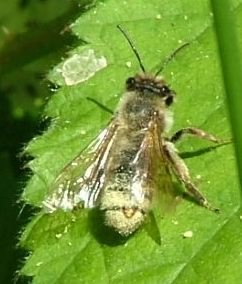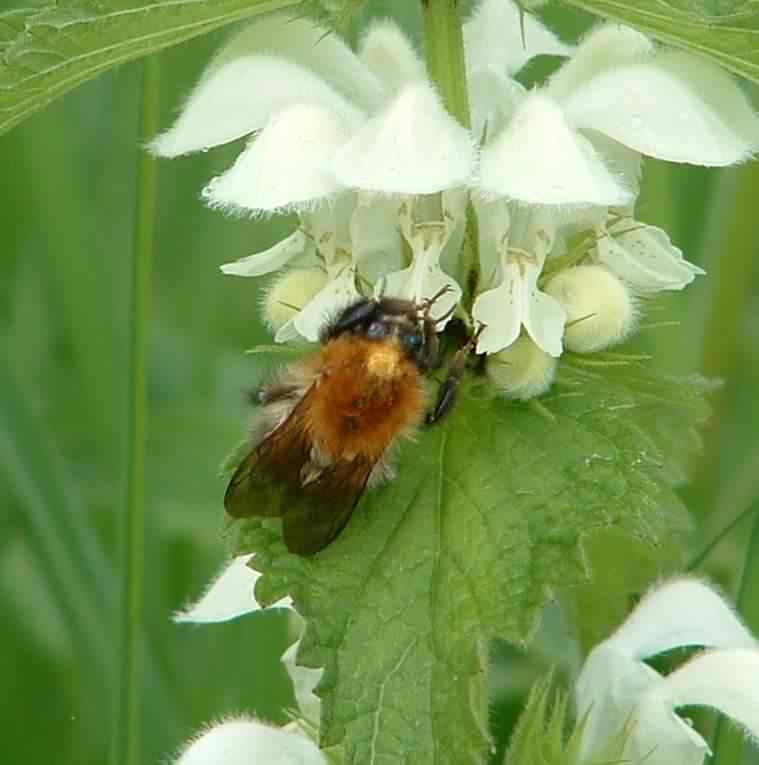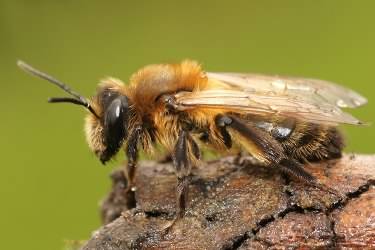
Dusted in pollen and
parasitised by Stylops
Photo ©2006
J. Lance, BCP

Photo ©2006–

Photo ©2012 Henk Wallays
Click any photo for a larger image
Chocolate Mining Bee - Andrena scotica
Family - Andrenidae
Syn. - A. carantonica
Also known as - Hawthorn Bee
The Chocolate Mining Bee is a common communal mining bee occurring in many habitats found in the U.K, western to central Europe. It is also commonly known as A. carantonica. Sexually dimorphic, the females are around 11–14mm (0.4–0.55in) long similar in size to a Honey bee, the slightly smaller and slimmer males are 10–13mm (0.39–0.5in) long and die out somewhat earlier than the females. They are an overall black with a covering of fine brown to orange hairs, which is denser on the thorax. On the wing from about March to June and polyectic, they build their nest underground in firm sandy soils and also occasionally under structures. Multiple females will share a nest site but have differing brood chambers within the nest.
Chocolate Mining Bees are often parasitised by larvae of the order Strepsiptera, which in over 70% of cases are females of the parasitic insect Stylops melittae which specialise in mining bees. Stylops produce large numbers of larvae on flowers so when a bee visits for pollen it picks up a parasitic load. These larvae then enter the host to feed and establish themselves in the abdomen. Some time later their anterior portion breaks through between two abdominal segments of the bee's skin, where they then pupate, with ault males emerging from their host whilst females stay inside.
See the left photo below where a small yellow protrusion will be seen on the bee's abdomen, this is a Stylops anterior portion.
 Dusted in pollen and parasitised by Stylops Photo ©2006 J. Lance, BCP |
 Photo ©2006– |
 Photo ©2012 Henk Wallays |
Click any photo for a larger image | ||
Site design ©1999– Brickfields Country Park - Privacy -